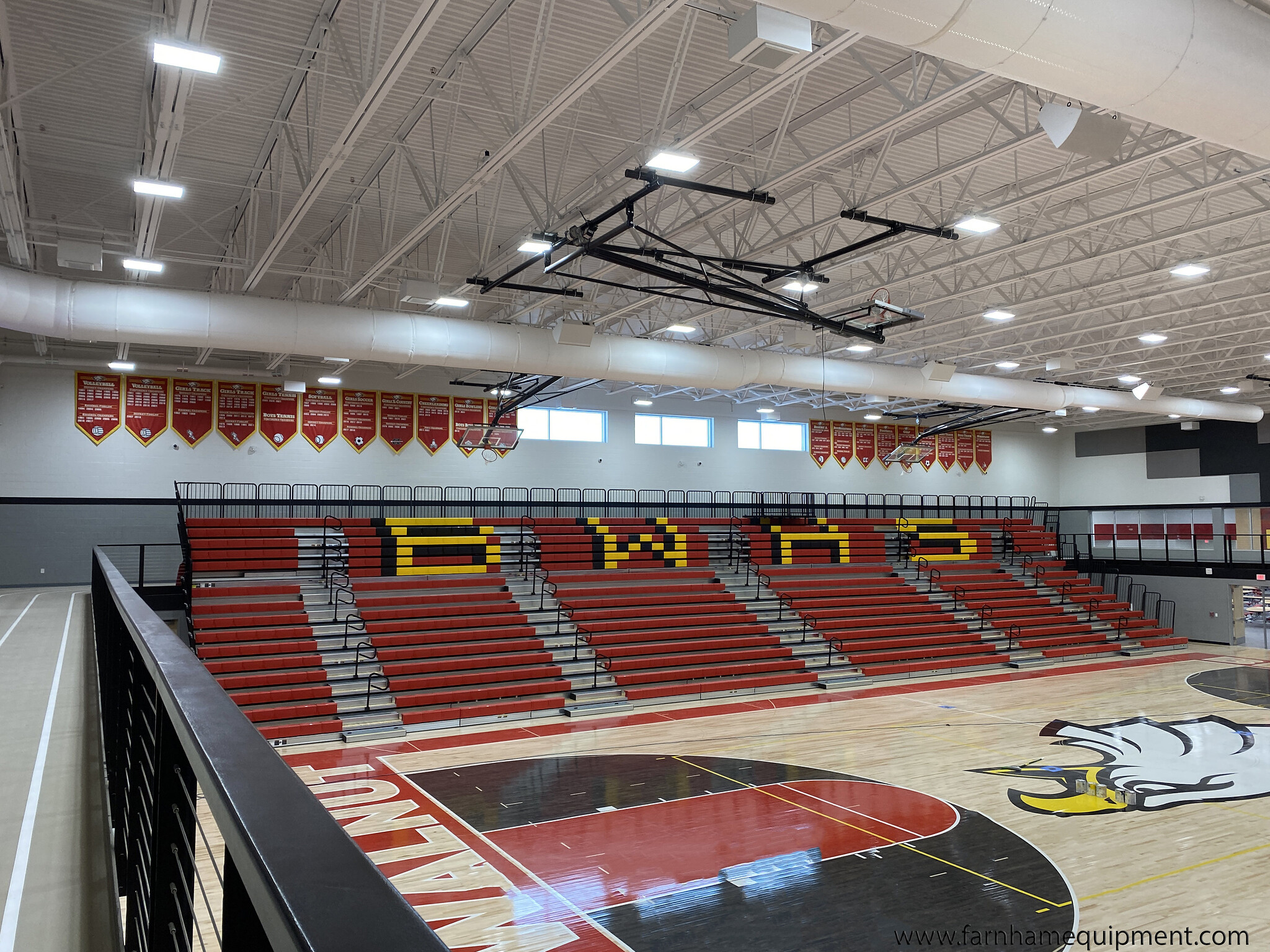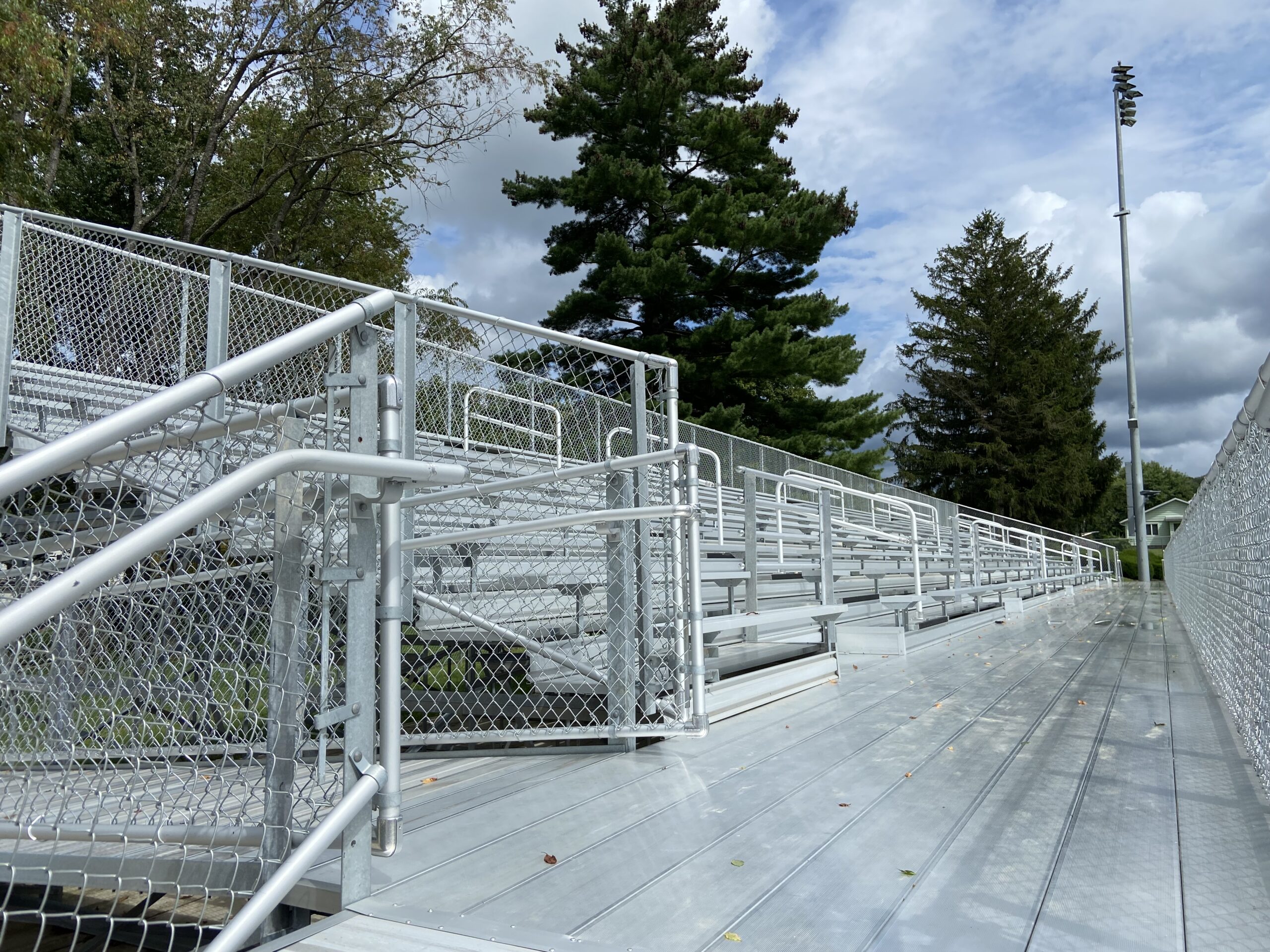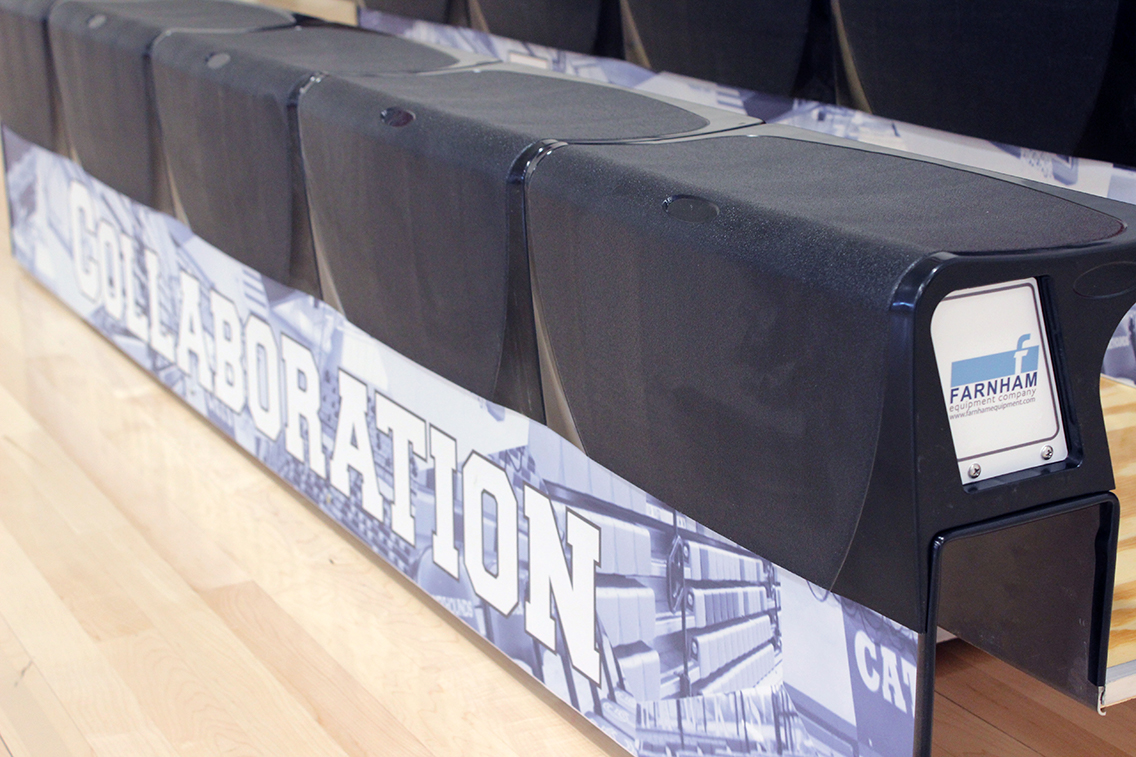We’ve talked about code compliance and bleacher safety quite a bit lately. We have had the opportunity to present two presentations at the Ohio Public Facilities Maintenance Association’s Annual Conference and one panel discussion presentation at the Ohio School Board Association’s Capital Conference. At each of our presentations, we have several questions from the attendees, which I’m sure you may have as well or at the very least, you may find the answers informative. Thus emerged our new e-series, Bleacher Safety – What’s Your Risk? Here we will answer numerous questions from various points of view and call on our friends and colleagues to join the conversation. If at any time you have a question, please feel free to contact us, we will answer your question directly as well as share it with our readers.
Part 1: An Introduction & Interpreting the Standards
The International Code Council (ICC) developed a set of standards to cover both new and existing installation of bleachers which includes: Fixed, Telescopic, Indoor, Outdoor, Temporary, and Permanent Use. For the sake of this series, we will we will use the term “bleachers” to mean all of these items as the terms “Bleachers” and “Grandstands” are both defined by the ICC as Tiered seating supported on a dedicated structural system and two or more rows high.
Rewinding a bit, let’s look at why the codes were put into place to begin with. The set of standards developed by the ICC was initiated by some alarming statistics:
- During 1999, bleacher accidents killed two children and caused 22,100 injuries.
- Approximately 6,100 of those injuries occurred when an individual fell from — or through — a stand of bleachers to the ground below. Children under the age of 15 accounted for about 4,910 of these incidents.
- The deaths recorded in 1999 involved a six-year-old child who fell through a 13-inch opening between the footboard and seatboard and a three-year-old who fell through an opening in the guardrail.
As a result, the Consumer Product Safety Commission, backed by Federal Legislation, formed a round table on bleachers and grandstands. Following, the Code Council Board of Directors appointed the International Code Council Consensus Committee on Bleacher Safety to develop a standard to cover both new and existing installation of bleachers which includes fixed, telescopic, indoor, outdoor, temporary, and permanent use.
To date, the most current set of standards is the ICC 300-2012. Note, this is the International Code and while it is adopted by all fifty states and the District of Columbia, it isn’t always the latest version that each state follows and isn’t always the entire set of standards that are enforced. For instance, the state of Ohio follows the ICC 300-2007, Chapters 1-4 and while it is similar in many aspects to the 2012 version, it is a bit less definitive than the most recent release.
You can see in the Ohio Administrative Code, where this information is listed. In the Ohio Building Code 1028.1.1 (found here about ¾ down the page) you will see that:
1028.1.1 Bleachers. Bleachers, grandstands and folding and telescopic seating, that are not building elements, shall comply with Chapters 1-4 of ICC 300.
Referenced as, ICC 300-07, ICC Standard on Bleachers, Folding and Telescopic Seating within the Ohio Administrative Code, 4101:1-35 References.
Ohio is not set to review this standard until 2016, in which the International Code Council will be working on the newer version of their standards. It’s quite plausible that Ohio will never enforce the same set of standards the ICC has in place.
What do we recommend?
Also referenced in the Ohio Revised Code, Title [37] XXXVII Health-Safety-Morals, Chapter 3781: Building Standards – General Provisions: 3781.06 Public buildings to be safe and sanitary – definitions:
(A)
(1) Any building that may be used as a place of resort, assembly, education, entertainment, lodging, dwelling, trade, manufacture, repair, storage, traffic, or occupancy by the public, any residential building, and all other buildings or parts and appurtenances of those buildings erected within this state, shall be so constructed, erected, equipped, and maintained that they shall be safe and sanitary for their intended use and occupancy.
The keywords here are safe and sanitary. The bottom line is that you are responsible for everyone that is using your equipment on your property. Your responsibility is to provide an environment that is free of recognized hazards. Because you are liable for any accidents or injury that may take place, why not try to reduce your risk as much as possible? The best way to do that is to stay up to date with the International Code Council’s latest version of the standards. Reason being, the terms and standards are much more definitive than the earlier version and it is the most current version put in place to keep the community safe. It’s been reviewed by the code council to be the most complete and up to date set of standards. For this reason, our series will primarily reference the ICC 300-2012 which is now available for public viewing.
Up Next: Part 2 – Code Basics



0 Comments